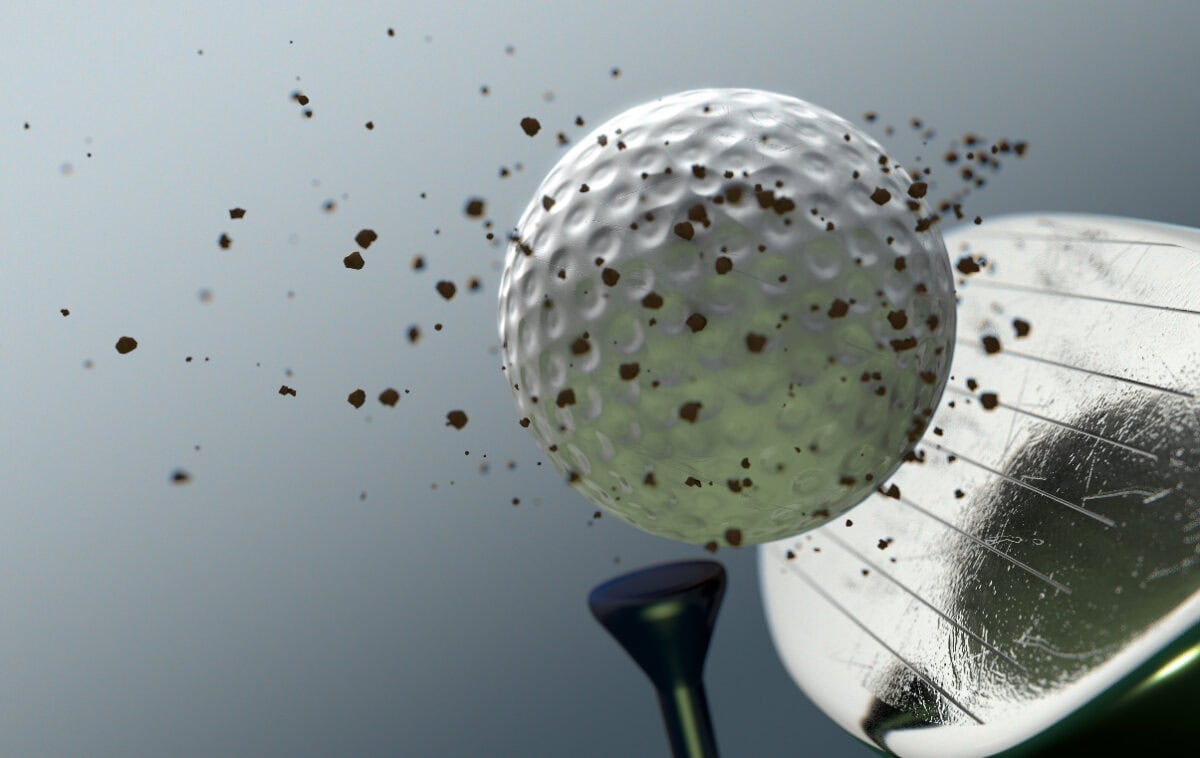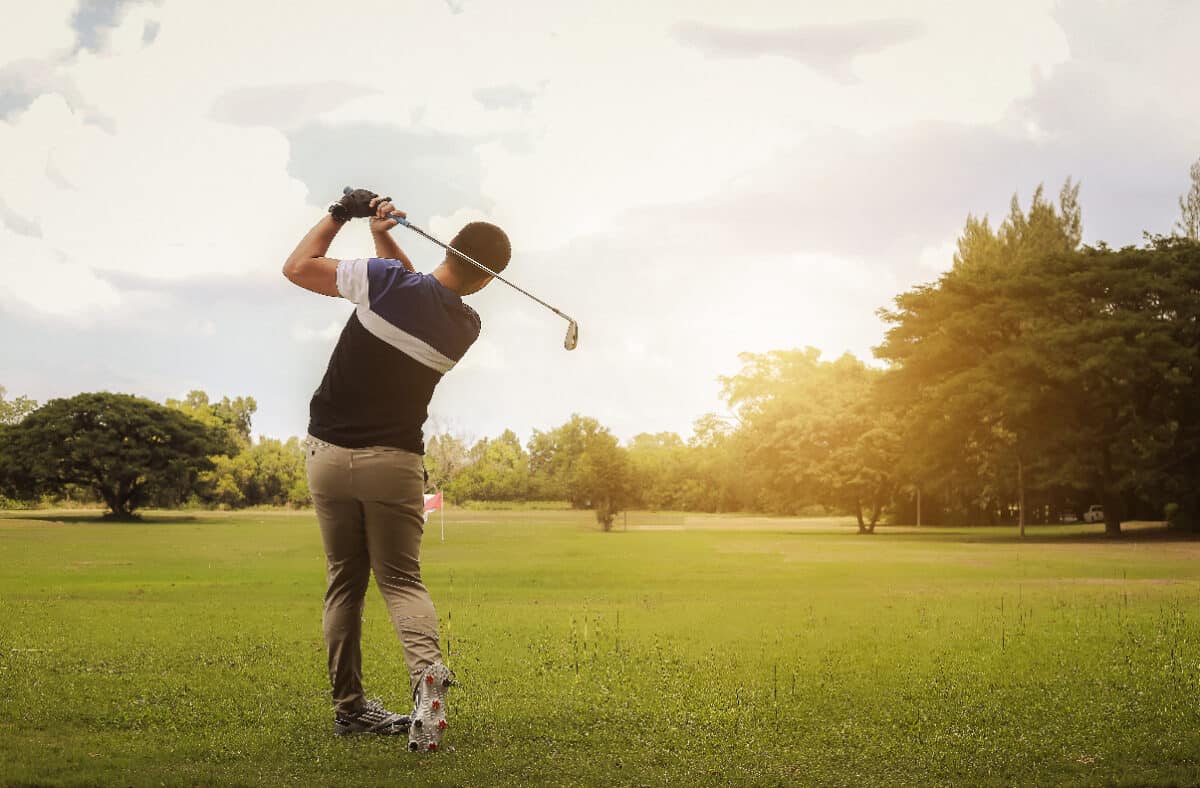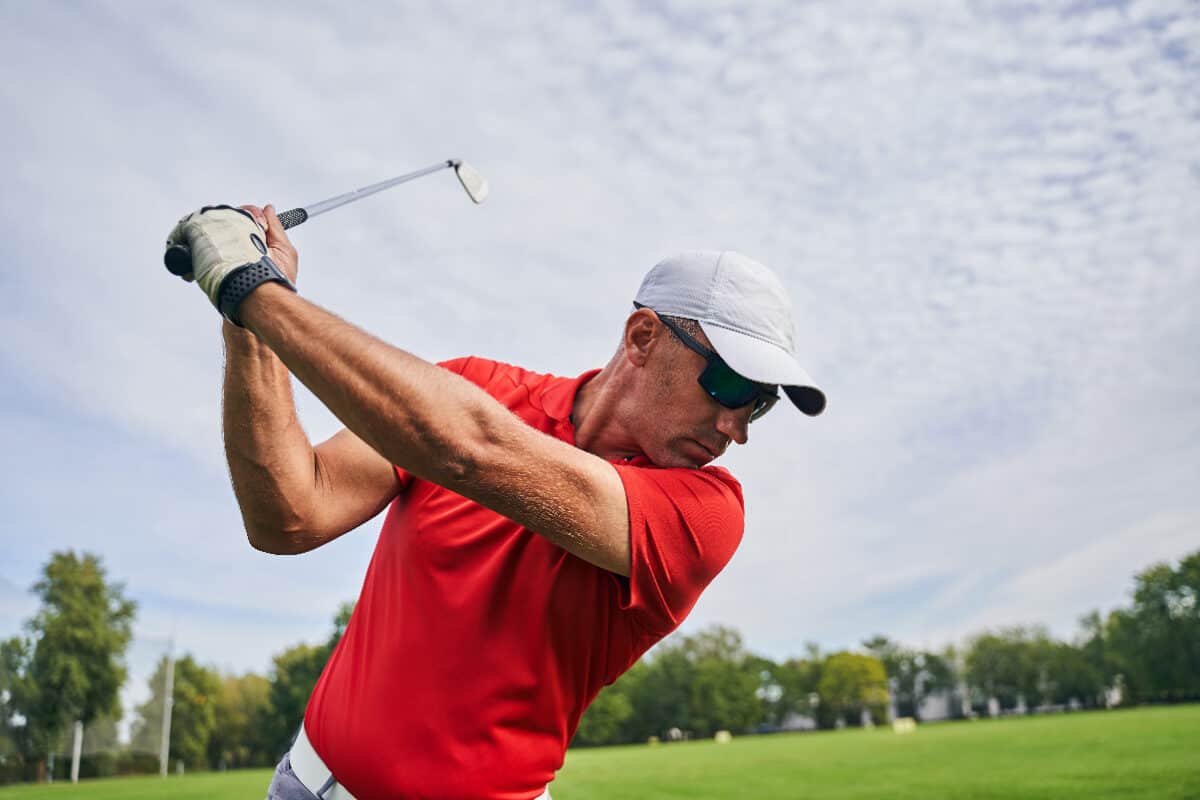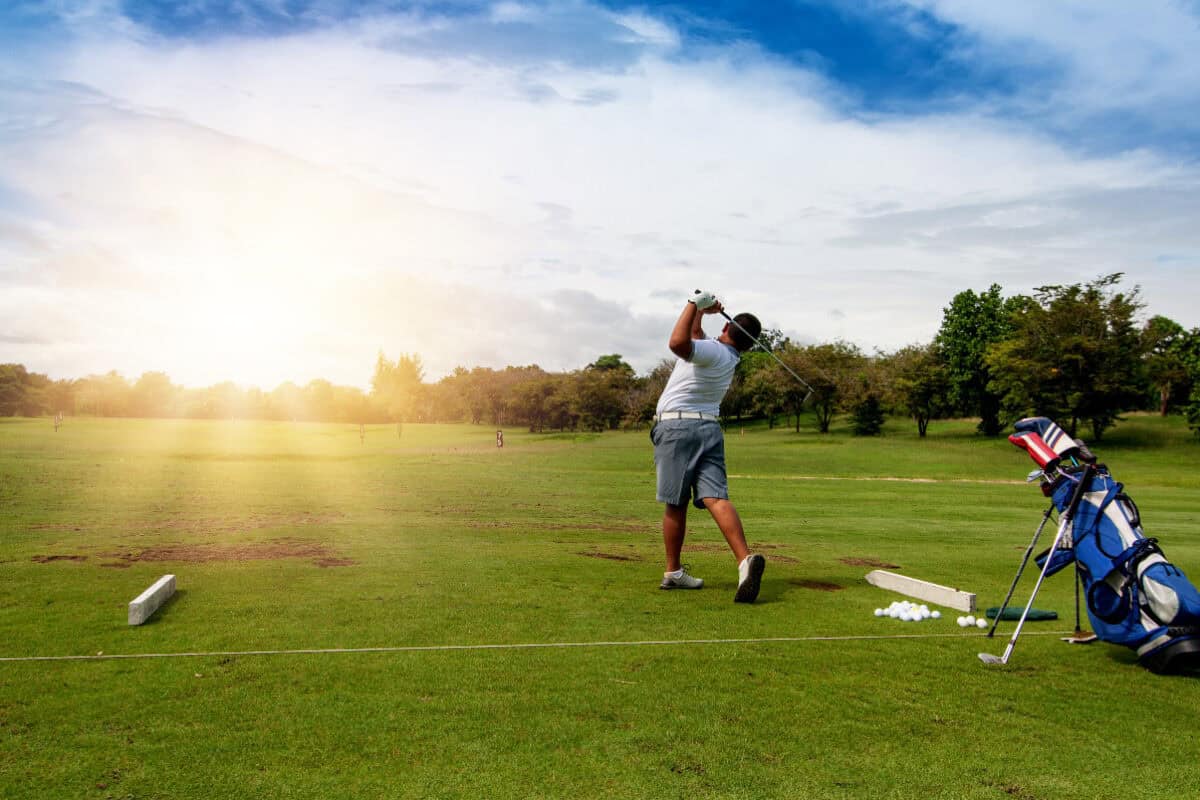What is Spin in Golf? A Detailed Look at This Crucial Aspect of the Game
Golf is a game of precision and finesse. While power is important for driving distance, the true mastery of golf lies in the ability to control your shots.
This control comes from imparting spin on the ball, allowing it to curve through the air and stick on the greens. Understanding spin is key to improving your golf game.

What is Spin?
In simple terms, spin is the rotational movement of the golf ball in flight. When you strike the ball with your club, you impart spin based on factors like your swing path, angle of attack, and clubface position at impact. This spin causes the ball to curve or spin in a certain direction.
There are three main types of spin in golf:
- Backspin – This is where the ball spins backward in the direction it just came from. Backspin creates lift and keeps the ball in the air longer. It also helps with control, as the backspin holds the ball steady on its flight path. On the greens, the backspin allows the ball to stop quickly after landing.
- Sidespin – Also known as slice or hook spin, sidespin makes the ball curve dramatically left or right in flight. It occurs when the clubface is open or closed relative to the swing path at impact. Sidespin can be undesirable if you hit big slices or hooks. But shaping controlled draws and fades using sidespin is a key shotmaking skill.
- Topspin – This happens when the ball spins forwards in the direction it’s moving. Topspin helps increase distance on shots but typically reduces control compared to backspin. It’s more common with iron shots that have a downward angle of attack into the ball.
Understanding these three spin types and learning to control them is crucial for improving your ball striking skills.
Even small differences in spin at impact can dramatically alter the ball’s flight path.
Why Does Spin Matter in Golf?
Spin matters because it allows golfers to shape shots intentionally and gain precision in their ball flight. Here are some key reasons why spin is important:
Distance Control
Backspin holds the ball in the air longer, while the topspin increases roll and distance. Controlling spin types and amounts let you hit shots with precise yardages.
Curve and Shape
Sidespin applied at impact lets you curve tee shots, hit draws and fades, or maneuver the ball around obstacles. Shaping shots is an advanced skill that requires spin mastery.
Consistent Trajectories
Consistent spin results in uniform shot heights carry, and landing angles. You want reliable spin so each club flies true every time you swing it.
Stopping Power on Greens
Backspin is essential for stopping the ball quickly on greens. Without enough backspin, approach shots will release too far across the putting surface. Dialing in proper spin leads to more birdie putts.
Reduce Wind Effects
The lift from the backspin helps reduce the influence of wind on the ball’s flight. Sidespin can also counteract crosswinds if you need to hit a low curve.
Ball Interaction with Turf
Spin affects how the ball interacts with the turf, leading to desired or unwanted results. Too much negative sidespin from a closed clubface increases digging. But backspin and positive sidespin can improve contact.
As you can see, spin impacts almost every aspect of golf performance. Let’s look at some common situations where spin makes a big difference.

Golf Situations Where Spin is Important
There are certain types of golf shots and situations where spin is especially critical for achieving the desired outcome.
Full Swing Shots into Greens
For approach shots with mid and short irons, dialing in the right combination of backspin, sidespin, and launch angle is key. You need enough spin to hold greens, while also accounting for weather and pin locations.
Pitch Shots around Greens
Finesse pitch shots rely heavily on the spin for precision. Opening or closing the clubface to impart sidespin lets you curve shots around obstacles. The feel for these specialty shots takes practice.
Bunker Shots
Spinning the ball the right way to lift it out of bunkers, while not overspinning into the lip, requires deft skill. Bunker spin comes from the club-sand interaction, along with low point and clubface manipulation.
Putting
Putting may seem like a non-spin part of golf, but the initial launch direction and rotational velocity affect the roll. Mishits and off-center strikes negatively influence putting spin and consistency.
Short Game Shots
For chips, pitches, and wedge shots, dialing in spin is paramount. You need enough spin to stop the ball on a dime, but not so much that it balloons or gets pulled off line. This nuance takes practice to master.
Driving for Distance
The driver swing relies more on speed than spin, but backspin still affects carry distance and shot shape. Too much sidespin from an open or closed clubface at impact will hurt accuracy.
As you progress in golf, you’ll learn how to control spin across all shot types. Next, let’s look at some key factors that influence spin.

What Factors Influence Spin in Golf?
Many variables impact the amount and type of spin imparted at impact. Mastering these factors will give you more control and allow shaping a wider range of golf shots.
Clubhead Speed
Faster swing speeds produce more spin from greater friction between the clubface and the ball. But you can still achieve quality spin at lower speeds with proper technique.
Attack Angle
Steep, descending blows with irons generate more backspin than shallow, sweeping impacts. Driver shots struck upward have lower spin rates.
Low Point Contact
Striking the ball at the lowest point of your swing arc maximizes spin from direct clubface compression rather than glancing contact.
Clubface Position
An open face relative to the swing path increases the sidespin for a slice. A closed face adds hook spin. Keeping the face square to the path creates straight, backspinning shots.
Clubface Grooves
The grooved face of irons and wedges help impart spin on shots from the rough and fairway. Newer grooves spin better than older, worn ones.
Golf Ball Construction
Multi-layer balls with urethane covers grab the face better for more spin. Lower compression balls also deform more against the face for extra friction.
Quality of Strike
Center-face contact transfers maximum face energy into the ball for optimum spin. Mishits reduce spin from glancing blows and off-center impacts.
Golf Club Selection
lofted golf club like a lob wedge will inherently impart more spin than lower lofted clubs like mid-irons. Club selection adapts spin for the situation.
Weather Conditions
Wet conditions make the clubface and ball surface more frictionless, reducing spin. Hot, dry weather provides more spin through greater friction at impact.
Golf Swing Path
Inside-out and inside-to-square club paths maximize backspin from compression. Outside-in and over-the-top moves reduce spin and launch.
As you gain experience, you’ll learn how to alter different factors to control spin depending on the shot you want to hit.
How to Hit Shots with Different Spin Types
One of the marks of an advanced golfer is the ability to shape shots by applying intentional spin. Here’s a quick overview of how to hit basic shots with various spin types:
High Backspin
To maximize lift and backspin, use lofted clubs, a descending blow with shaft lean, square clubface, clean grooves, and ball first contact. This allows the ball to climb with a high, soft flight.
Low Backspin
The shallow angle of attack, sweeping impact, open face, lower lofted club, worn grooves, and downward strike reduce backspin. The ball flight is lower and runs more after landing.
Draw Spin
A strong left-hand grip closes the clubface slightly. Swing left to impact squares the face and imparts right-to-left sidespin for a drawing shot that holds the fairway.
Fade Spin
A weak right-hand grip opens the clubface at address. Swing right through impact keeps the face open for left-to-right sidespin to fade the shot off the tee or into greens.
More Topspin
Forward leaning shaft, low hands at impact, and sweeping upward blow against the ball generates topspin for low bullets that run after landing.
As you practice and experiment with all types of shots, you’ll develop better spin awareness and control.

Drills to Improve Your Golf Shot Spin
Here are some great practice drills to improve your ability to apply spin in golf:
Quarter Swing Pitching
Hit short pitch shots with a wedge using a quarter backswing. Focus on clean groove contact and face angle to shape shots with sidespin.
Ball First Impact
Place tee pegs an inch in front of and behind the ball. Swing to brush the front peg to ensure striking the ball before the turf. This maximizes spin-off the face.
descending Blow Gravity Drill
Set up to hit short wedge shots from a downhill side-hill lie. Let gravity help your swing naturally descend steeply through impact for extra backspin.
Open and Closed Face Drill
Hit shots with exaggerated open and closed stances and clubface alignments to learn how face angles at address affect sidespin.
Uphill Chips
Hit uphill chips from tight lies with a 7-iron. The swept-up impact creates a topspin to reach the hole. Great for learning spin control.
Wet Greens Pitching
On a wet practice green, pitch shots to a close flagstick. The reduced friction means you must swing easier and focus on clean grooves and ball contact for spin.
Spin Match Drill
Drop two balls near each other on the green. Try to match the backspin by replicating swing speed, face angle, and point of contact so both balls stop close together.
Tackling drills like these will accelerate your spin proficiency.
How Spin Changes Through the Golf Bag
Understanding how spin is affected by different clubs is another key to scoring. Long irons and woods naturally spin less than wedges.
Here are some spin characteristics of common club types:
Driver
The driverface has the least loft so it imparts lower backspin to maximize distance off the tee. Curving the big dog mostly comes from controlling the face angle.
Fairway Woods
Slightly more loft than drivers for a mid-level of backspin. Fairway woods spin enough to hold firmer greens but still release for roll-out on softer surfaces.
Long Irons
Long irons (2-4) have shallow face angles that generate lower spin rates and penetrating flights. Great for windy days when you need to keep it low.
Mid Irons
Mid irons (5-7) offer a blend of moderate spin and penetrating distance. Their versatility works for many shot types, especially longer approach shots.
Short Irons
Higher lofted short irons (8-PW) increase spin for greater stopping power into greens. You can throw darts to pins and shape shots.
Wedges
With wide sole grinds and the most loft, wedges deliver maximum spin. Great for short finesse shots and sticking the ball on the green.
So as you go down the set, clubs increase in spin. But you can also control spin across the bag through your swing technique.
How Different Golf Swings Affect Spin
Beyond club selection and conditions, your golf swing influences the type and amount of spin you apply.
Downswing Attack Angle
Steep downswings naturally compress the ball with descending impact for more backspin. Shallow swings sweep up for lower spin and longer carry.
Clubface Rotation
Delaying clubface closure, flipping, or casting can leave the face open and increase the sidespin. Pulling the handle to close the face early will also add a sidespin.
Clubhead Speed and Compression
Faster speeds compress the ball against the face for more friction and spin off the club. Slower swings generate less forceful impact and spin.
Low Point Consistency
Striking the ball at the lowest point of your arc with the face square maximizes spin. Inconsistent low points and glancing blows reduce spin.
Swing Path Direction
Inside-out paths maximize compression and backspin. Outside-in paths sweep across the ball robbing spin. Over-the-top can also reduce spin and launch.
As you improve ball striking and swing dynamics through the years, you’ll gain more conscious control over shot spin and ball flight.
Playing in Different Spin Conditions
One final key is adjusting your game for conditions that affect spin. Hot, dry days allow more spin, while wet weather reduces spin.
High Spin Conditions
When faced with conditions that maximize spin, swing easier and club up. Use shallower attacks and open the clubface slightly to limit the ball backspin and hold the surface.
Low Spin Conditions
With wet weather, minimize swinging out of wet grass and pick cleaner lies when possible. Hit down firmly and close the face to squeeze maximum spin out of shots.
Being able to alter your game plan based on spin conditions is a lifelong golf skill that needs constant sharpening.
Conclusion
Understanding golf shot spin is a meta-skill that blends science and artistry for shaping shots. The information in this article just scratches the surface of a deep, nuanced topic.
With diligent practice, you can go from simply playing golf to truly controlling your golf ball through spin.
Master spin, and watch your consistency and shotmaking reach new heights. The joys of golf center around flight mastery, and that comes from spin proficiency. Keep working hard and have fun flying it your way!

